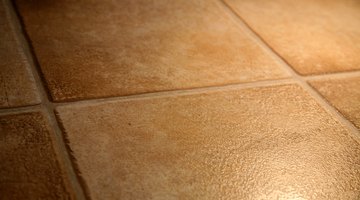Tips on Using Surfacegard Penetrating Sealer
Table of Contents
SurfaceGard penetrating sealer, made by TileLab, is a liquid sealer formulation designed to repel water, oil, dirt and stains by penetrating into the surface of tile, stone and grouting. SurfaceGard sealer also inhibits mold and mildew growth.

It’s intended for use in food preparation areas and on floors and other high-traffic areas. SurfaceGard is nonabrasive, pH-neutral and low-odor. But you must apply it correctly if you want it to last and to protect a surface as it's designed to.
Preparation Tips
Don’t use SurfaceGard on dirty, wet surfaces or on surfaces previously covered with wax, acrylic finishes or other surface treatments. These will prevent sealer penetration. Such surfaces need to be cleaned with an appropriate cleaner and/or stripper before applying SurfaceGard, or the product won’t penetrate the surface. Allow cleaned surfaces and new installations to dry for at least 48 hours before applying SurfaceGard. Any moisture in the stone or tile surface will prevent sealer penetration, leaving unsealed spots. Wear old clothing and sturdy shoes while you apply SurfaceGard, and make sure your work area is well-ventilated.
Application Tips
Apply SurfaceGard with a new applicator, not a used one. You can use a mop, lambswool, brush or sponge to apply the product. Saturate your applicator and seal vertical surfaces from the top down. Allow SurfaceGard to penetrate for five minutes, then wipe up the excess to prevent streaking. Hard surfaces such as polished stone or tile normally need only one coat; but grout, porous stone such as travertine, and unglazed clay tile will need two coats. Allow the first coat to penetrate fully before applying a second coat.
Sealing Test
Let the sealer air-dry. Don’t try to hurry the drying process with heat. If there’s still visible surface residue after an hour of drying, wipe it off with a sponge or polishing pad. It takes two to three hours of drying time for SurfaceGard to fully seal a surface. After two hours, test the surface by sprinkling some water on a tile. Wait 15 minutes, then wipe it dry. If the spot you wetted has darkened, you’ll need to apply another coat of sealer.
Grout Release
You can use SurfaceGard as a pre-grouting sealer and grout release agent. Grout can stain porous stone and tile; excess dried grout is hard to remove. By coating the face of each tile with the sealer before installation, you prevent the grout from sticking to the tile face, making for easy cleanup. A gallon of SurfaceGard will coat about 1,000 square feet of polished stone or tile and around 300 square feet of porous stone or tile.
Care Tips
Wash as needed with a cleaner formulated for sealed tile surfaces. Don’t use cleaners containing abrasives, ammonia, acids or bleach. These can destroy the sealer’s water repelling ability. A sealer isn’t the same as a water-proofer. It resists moisture penetration, giving you more time to clean up staining messes. But if you leave staining liquids like tomato juice or wine for long enough, they will stain. Although sealers can last up to 20 years, you should test your surface every two years to see if it still resists water penetration. If the water soaks in rather than beads, you need to apply another coat of sealer.
The Drip Cap
- SurfaceGard penetrating sealer, made by TileLab, is a liquid sealer formulation designed to repel water, oil, dirt and stains by penetrating into the surface of tile, stone and grouting.
- Don’t use SurfaceGard on dirty, wet surfaces or on surfaces previously covered with wax, acrylic finishes or other surface treatments.
- These will prevent sealer penetration.
- Allow cleaned surfaces and new installations to dry for at least 48 hours before applying SurfaceGard.
- Any moisture in the stone or tile surface will prevent sealer penetration, leaving unsealed spots.
- Wear old clothing and sturdy shoes while you apply SurfaceGard, and make sure your work area is well-ventilated.
- You can use a mop, lambswool, brush or sponge to apply the product.
- If the water soaks in rather than beads, you need to apply another coat of sealer.
References
Writer Bio
Herb Kirchhoff has more than three decades of hands-on experience as an avid garden hobbyist and home handyman. Since retiring from the news business in 2008, Kirchhoff takes care of a 12-acre rural Michigan lakefront property and applies his experience to his vegetable and flower gardens and home repair and renovation projects.
Photo Credits
- Jupiterimages/Photos.com/Getty Images
- Jupiterimages/Photos.com/Getty Images
More Articles



